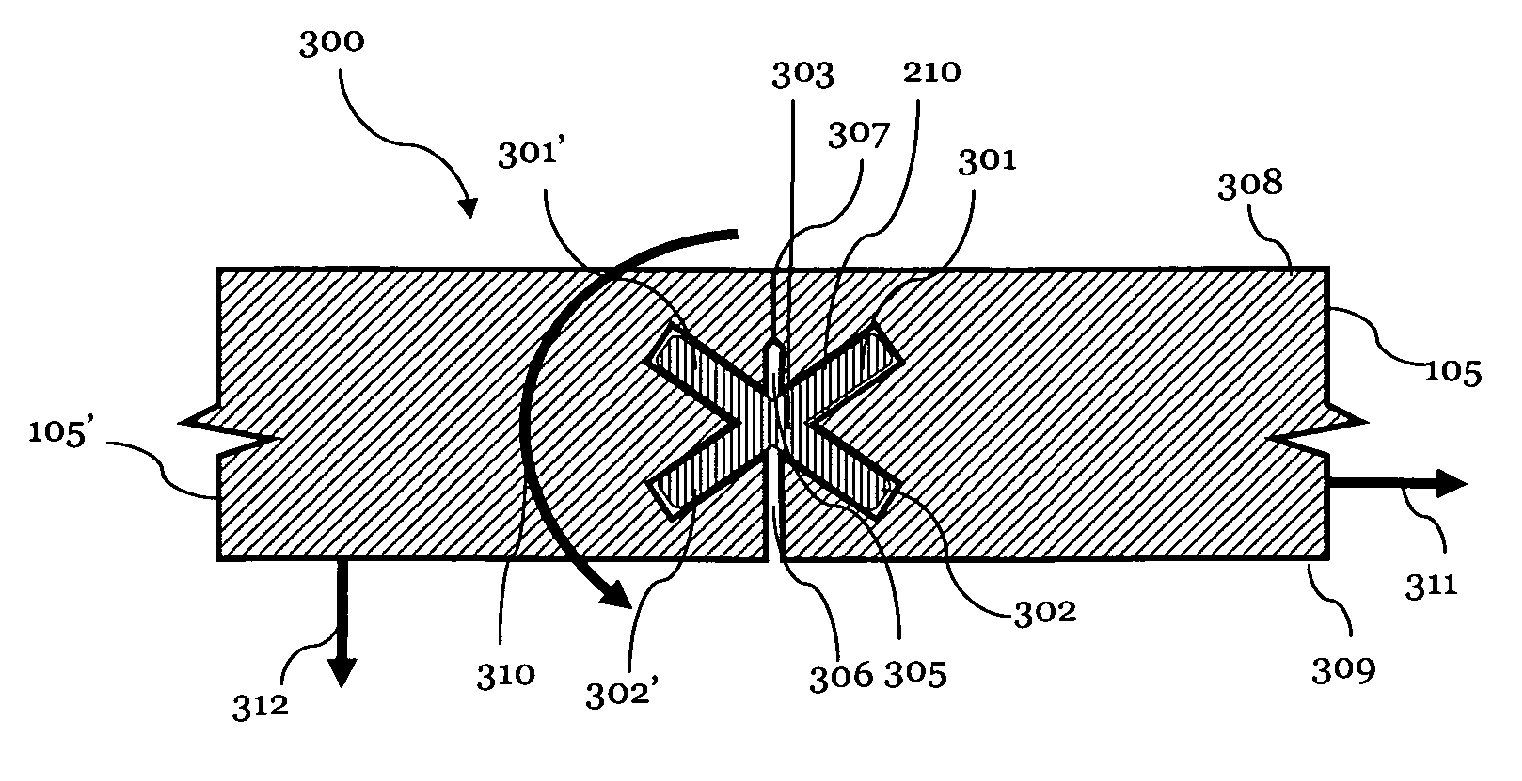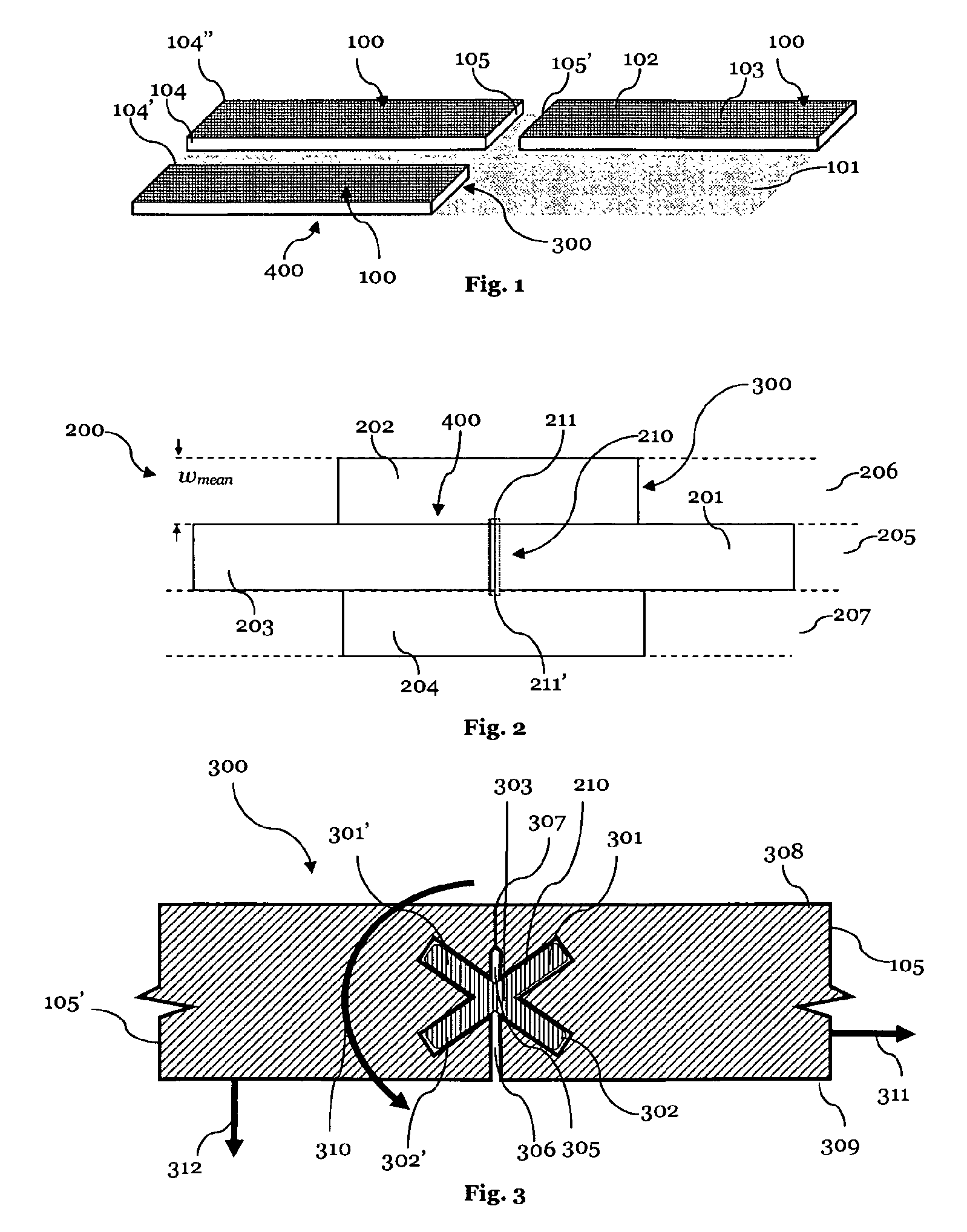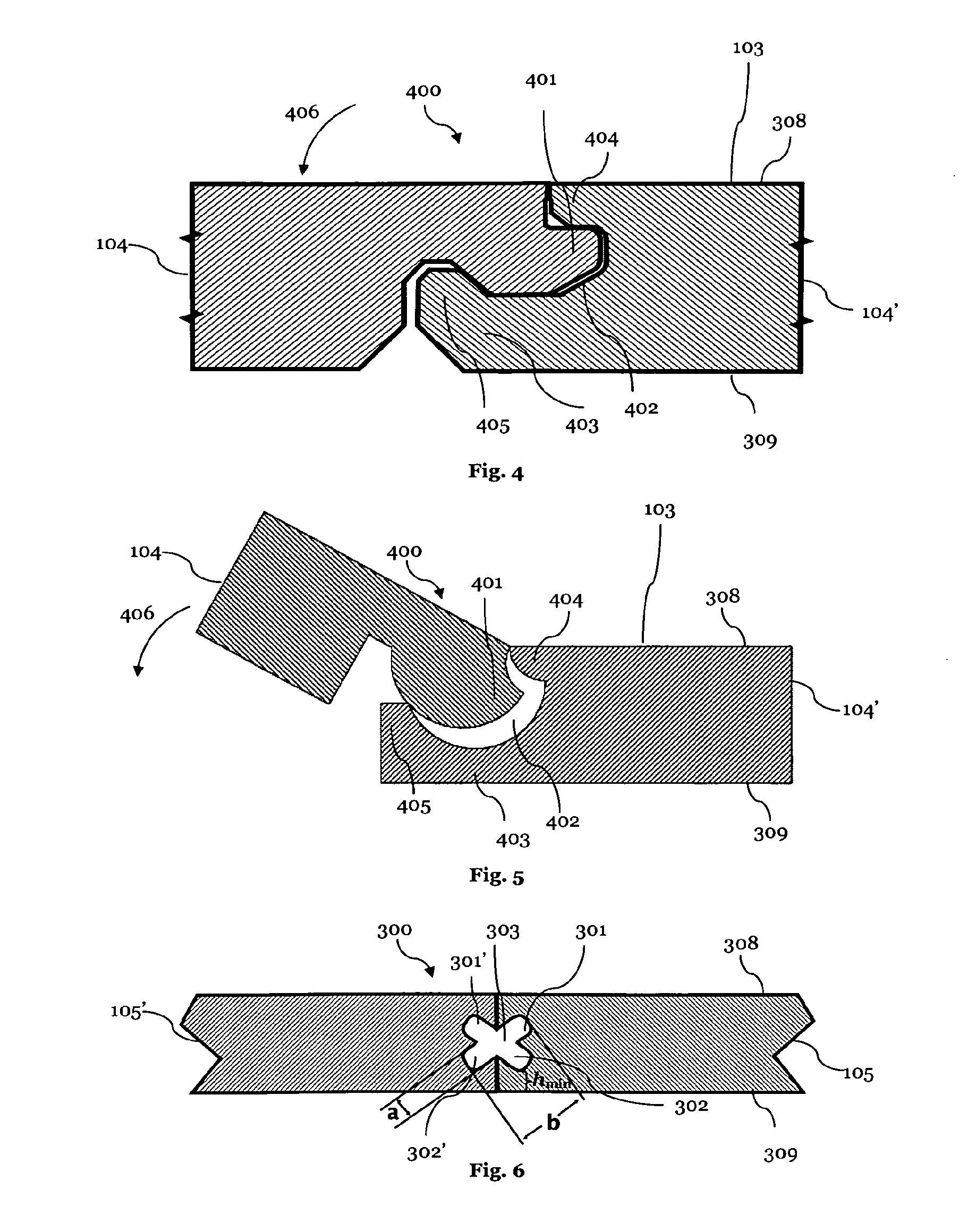Surface covering kit comprising panels and an extraneous locking element
a technology of locking element and surface covering, which is applied in the direction of sheet joining, flooring, fastening means, etc., can solve the problems of difficult machineability of many different surfaces, inability to work well, and inability to meet the needs of large-scale production, so as to improve the state of the art, improve the effect of quality and reliability
- Summary
- Abstract
- Description
- Claims
- Application Information
AI Technical Summary
Benefits of technology
Problems solved by technology
Method used
Image
Examples
Embodiment Construction
[0083]FIG. 1 is a schematic illustration showing three exemplary panels 100 laid in a common plane 101. These panels 100 can be made of any suitable material, however the invention is especially well suited for laminate panels made from HDF, MDF or LDF. The panels 100 can also be made of a wood composite, real wood, veneer, chip boards or OSB. The panels 100 have a mean or average thickness in between 3 mm and 30 mm and most preferably in between 4 mm and 14 mm. Since the connecting elements on the transverse sides according to the present invention have such a simple geometry, they are exceptionally well suited for very thin panels, such as 5 mm flooring laminate.
[0084]A decor 103 can either be provided as a separate decor layer, e.g. a decor printed on paper, or can be directly printed onto the panels 100. The decor 103 can be for example: a real wood imitation, a stone imitation, a ceramic imitation or the like.
[0085]As one can see in FIG. 1, each panel 100 defines a panel plane ...
PUM
 Login to View More
Login to View More Abstract
Description
Claims
Application Information
 Login to View More
Login to View More - R&D
- Intellectual Property
- Life Sciences
- Materials
- Tech Scout
- Unparalleled Data Quality
- Higher Quality Content
- 60% Fewer Hallucinations
Browse by: Latest US Patents, China's latest patents, Technical Efficacy Thesaurus, Application Domain, Technology Topic, Popular Technical Reports.
© 2025 PatSnap. All rights reserved.Legal|Privacy policy|Modern Slavery Act Transparency Statement|Sitemap|About US| Contact US: help@patsnap.com



